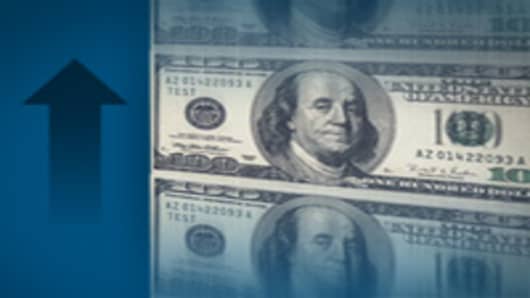Of course, we live in the land of no inflation.
Core cost of living is cruising along in the 1 to 2 percent range, according to government calculations, indicating that we have nothing to worry about when it comes to inflation concerns.
One can only imagine that the economists who project these assertions don’t have to eat.
By any measure imaginable, food prices are climbing and climbing fast and it’s not only in developing countries where income can’t keep up with the rise in the cost of goods.
Here in the US, food is putting a big bite on household budgets. More than 12 percent of after-tax income is now being spent on fuel and food, with more than half that number on the latter.
Commodity prices, as measured through the Standard & Poor’s GSCI, are up about 7 percent this year alone..
Still, the see-no-inflation hear-no-inflation speak-no-inflation deflation monkeys insist that these rising commodity prices will have no pass-through effects onto grocery store shelves.
Of course, we all know they’re wrong.
Consumers have been getting hammered for the past year, even if it doesn’t show up in the heavily massaged consumer price and producer price indexes.
So rather than relying on these purely academic measures of the cost of living, let’s take a more direct route.
The Bureau of Labor Statistics compiles the prices of various foodstuffs on a site that, frankly, isn’t always the most helpful. Some of the data is out of date and simply unavailable in some cases.
But I did a rundown on some basic food products to see where prices are heading, and as you might have guessed the news is not pretty, unless of course you consider wine one of the four basic food groups.
I checked the prices of the following goods to see where we stood month over month (December to January) and year over year. Monthly figures are first, annualized are second. Read it and weep:
- Ground beef up 6.8 percent month over month, and 11.1 pct year over year.
- Butter, up 3.2 percent monthly and a stunning 27 percent over the past year.
- Coffee, up 6.5 percent and 16 percent.
- Potatoes, up 3.6 percent and 7.1 percent.
- Lettuce actually fell 5 percent monthly after a spike higher in December, but is up 5 percent over the past year.
- Bread up 1 percent and 3 percent.
- Chicken up 0.8 percent. and 4.3 percent .
- Egg prices have been fairly steady.
- Milk, down slightly month over month, but up 2 percent year over year.
That doesn’t sound like the 1.6 percent inflation rate the government is feeding us, now does it?
The only good news is in orange juice, which rose marginally on a monthly basis and was down 1.6 percent year over year.
And the biggie was wine, which fell 27.6 percent in the one-month period after its usual spike higher for the holiday season, and is down 6.9 percent for the 12-month period. Indeed, I’ve been enjoying the $8.99 Smoking Loon at the liquor store on Route 519 in Belvidere, N.J. In vino veritas!
Then there’s gas.
Prices at the pump have surged so far in February and are up 23 percent over the past year.
Economists are debating how sustainable the rise in energy prices might be—nothing cures high prices like high prices, they reason—but at least one has interjected the “S” word—stagflation—into the debate. If you’ve been reading the past week, you’ll know I’m a big old worrywart when it comes to stagflation.



